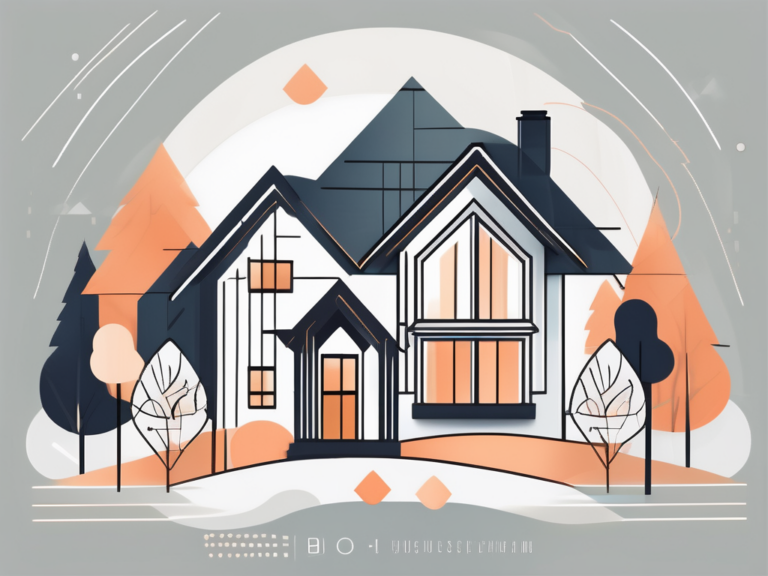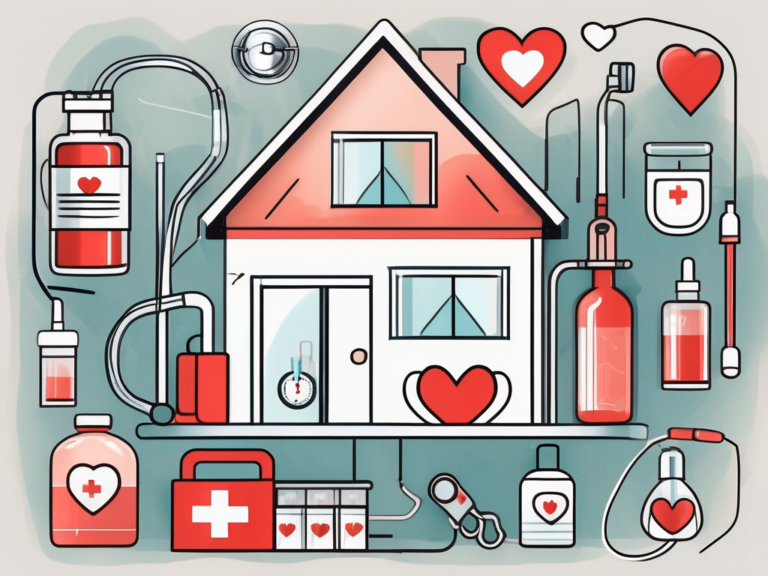Heart, Home and Oculo Motor Nerve
The human body is a fascinating interconnected system of various organs and functions. In this article, we will explore the intricate relationship between the oculo motor nerve, the heart, and the concept of home. Understanding these connections can provide us with valuable insights into the complexity of human physiology and psychology.
Understanding the Oculo Motor Nerve
The oculo motor nerve, also known as cranial nerve III, plays a crucial role in our vision and eye movements. It is responsible for controlling the movement of the eye muscles and enabling us to focus on objects at different distances. This nerve is essential for our everyday visual experiences, allowing us to navigate the world around us with ease.
When the oculo motor nerve is functioning optimally, our eye movements are coordinated, and our vision remains sharp and clear. However, certain disorders or injuries can disrupt its normal functioning, leading to various visual disturbances and eye movement impairments.
Anatomy of the Oculo Motor Nerve
The oculo motor nerve originates from the midbrain and consists of two main parts – the superior division and the inferior division. The superior division innervates the muscle responsible for elevating the eye and controlling the upper eyelid. On the other hand, the inferior division controls the muscles that move the eye laterally, medially, and downward.
Additionally, the oculo motor nerve also plays a role in controlling the size of the pupil, contributing to our ability to adapt to different levels of light. This intricate network of nerves and muscles ensures the smooth functioning of our eyes, allowing us to perceive the world in all its visual richness.
Functions of the Oculo Motor Nerve
Besides enabling eye movement and pupil size regulation, the oculo motor nerve is involved in other essential functions as well. It assists in maintaining eye position, ensuring both eyes work together to provide a unified visual image. Moreover, this nerve also contributes to our ability to converge our eyes when focusing on nearby objects.
Furthermore, the oculo motor nerve helps coordinate our eye movements with other sensory inputs, such as information from our vestibular system. This coordination ensures that our vision remains stable, and we can accurately track moving objects in our environment.
Common Disorders of the Oculo Motor Nerve
Despite its crucial role in vision, the oculo motor nerve can be susceptible to various disorders. One such disorder is oculomotor nerve palsy, which occurs when the nerve is damaged or compressed, leading to eye movement abnormalities and double vision. Another condition is known as internuclear ophthalmoplegia, where there is an interruption in the communication between the oculo motor nerve and the abducens nerve, resulting in impaired eye movement coordination.
It is important to note that any sudden changes in vision or eye movements should be promptly evaluated by a medical professional. Early diagnosis and appropriate treatment can help alleviate symptoms and prevent further complications.
Understanding the oculo motor nerve and its intricate functions is crucial in appreciating the complexity of our visual system. From the precise coordination of eye movements to the regulation of pupil size, this nerve ensures that our vision remains clear and our perception of the world is accurate.
Next time you effortlessly shift your gaze from one object to another or effortlessly adapt to changes in light, take a moment to appreciate the incredible work of the oculo motor nerve. It is a testament to the remarkable design of our bodies and the intricate interplay between nerves, muscles, and sensory systems.
The Heart: A Central Organ
The heart is, undoubtedly, one of the most vital organs in the human body. It plays a central role in our circulatory system, pumping oxygen-rich blood to all parts of our body. Beyond its physical function, the heart also holds immense symbolic value, representing emotions and the essence of life itself.
The Structure of the Heart
The heart is a muscular organ located in the chest cavity, slightly tilted towards the left side. It is divided into four chambers – two atria and two ventricles. The atria receive blood from various parts of the body, while the ventricles pump the blood out to the lungs and the rest of the body. The walls of the heart are composed of specialized cardiac muscle tissue, which contracts rhythmically to propel blood forward.
Furthermore, the heart is not just a simple pump; it is a marvel of engineering. It is designed to efficiently distribute blood throughout the body, thanks to its intricate network of valves. These valves ensure that blood flows in one direction, preventing any backward flow and maintaining the efficiency of the circulatory system. The coordinated opening and closing of these valves create the characteristic “lub-dub” sound that we associate with a healthy heartbeat.
Moreover, the heart is equipped with a complex network of blood vessels, including arteries, veins, and capillaries, ensuring the delivery of oxygen and nutrients to every cell in our body. This intricate structure allows the heart to function as a highly efficient pump, continuously supplying oxygenated blood to sustain our various bodily processes.
The Role of the Heart in Circulation
The circulatory system, often referred to as the cardiovascular system, is responsible for the transportation of blood throughout the body. The heart acts as the powerhouse of this system, working tirelessly to maintain a continuous flow of blood. It pumps oxygenated blood from the lungs to the rest of the body via arteries, while simultaneously receiving deoxygenated blood from the body and routing it back to the lungs for oxygenation.
This intricate process of circulation ensures that every cell in our body receives the necessary oxygen and nutrients for their proper functioning. Without the heart’s relentless pumping action, our bodies would not be able to survive for more than a few minutes.
Furthermore, the heart’s role in circulation extends beyond the physical aspect. It is often associated with love and emotions. We use phrases like “heartfelt” and “heartbroken” to describe the intensity of our emotions. The heart’s rhythmic beating is a constant reminder of our existence, a steady companion throughout our lives.
Heart Diseases and Prevention
Heart diseases, such as coronary artery disease, heart attacks, and heart failure, pose significant threats to our overall well-being. These conditions often result from a combination of genetic factors, lifestyle choices, and underlying medical conditions. Leading a sedentary lifestyle, consuming a diet high in unhealthy fats, smoking, and chronic stress are some of the risk factors associated with heart diseases.
However, maintaining a healthy lifestyle can greatly reduce the risk of heart diseases. Regular exercise, a balanced diet, stress management, and avoiding tobacco products are essential steps towards a healthy heart. Additionally, regular medical check-ups and early detection of risk factors can further aid in preventing heart diseases and promoting overall heart health.
It is important to remember that the heart is not just a physical organ; it represents the core of our being. Taking care of our heart means taking care of our emotional well-being as well. Nurturing relationships, practicing self-care, and finding joy in life are all crucial for maintaining a healthy heart, both physically and emotionally.
The Concept of Home in Human Psychology
In addition to the physiological aspects, the concept of home holds a special place in human psychology. Home represents more than just a physical space; it encompasses a sense of belonging, security, and personal identity. Our relationship with our home environment can impact our mental well-being in profound ways.
The Psychological Importance of Home
Home acts as a sanctuary, a place where we can retreat and find solace from the challenges of the outside world. It provides a sense of stability, a familiar space where we can truly be ourselves. The psychological concept of home extends beyond the physical structure; it includes the emotional connections we form with our living space and the people within it.
Moreover, the idea of home is deeply intertwined with our sense of self. Our personal identity is often shaped by the experiences, memories, and relationships we have within the walls of our home. It is a space where we can express ourselves, showcase our values, and surround ourselves with the things that bring us joy.
Furthermore, home serves as a backdrop for our life experiences and memories. The sights, sounds, and scents associated with our home can evoke a range of emotions, grounding us and offering a sense of comfort in times of stress or uncertainty. The creaking of the stairs, the smell of a home-cooked meal, or the laughter shared with loved ones can all contribute to a deep sense of emotional connection and nostalgia.
Home as a Place of Safety and Comfort
Feeling safe and secure is a fundamental human need, and our home environment plays a crucial role in meeting this need. A well-maintained and organized home can create a sense of order and predictability, reducing anxiety and promoting mental well-being. It provides a haven where we can unwind, rejuvenate, and find respite from the demands of daily life.
Moreover, the personalization of our living space, through cherished belongings and meaningful decor, further enhances the emotional connection we have with our home. These personalized elements can serve as reminders of our values, aspirations, and cherished relationships, contributing to a sense of purpose and happiness. Surrounding ourselves with objects that hold sentimental value or reflect our passions can create a sense of comfort and familiarity.
Additionally, the physical aspects of our home environment, such as lighting and temperature, can significantly impact our well-being. Natural light has been shown to improve mood and increase productivity, while proper ventilation can enhance air quality and promote better sleep. Creating a comfortable and nurturing environment through these considerations can have a positive impact on our mental and physical health.
The Impact of Home Environment on Mental Health
Research suggests that the quality of our home environment can have a profound impact on our mental health. A welcoming and supportive home atmosphere can promote positive emotional well-being, foster healthy relationships, and contribute to overall life satisfaction. On the other hand, a chaotic or unsupportive home environment may result in increased stress, conflict, and subsequent mental health challenges.
It is crucial to recognize the significance of our home environment and its potential influence on our mental well-being. Creating a nurturing and harmonious living space involves considering factors such as natural light, proper ventilation, sound insulation, and the incorporation of nature elements. Valuing open communication, respect, and shared responsibilities within the household can also contribute to a positive home atmosphere.
In conclusion, the concept of home goes beyond its physicality. It encompasses a sense of belonging, security, and personal identity. Our relationship with our home environment has a profound impact on our mental well-being. By understanding the psychological importance of home, we can create a space that nurtures our emotional needs, promotes a sense of safety and comfort, and enhances our overall mental health.
The Interconnection: Heart, Home, and Oculo Motor Nerve
As we delve deeper into the intricate connections between the oculo motor nerve, the heart, and the concept of home, we begin to realize that these three elements share a profound interdependence. Though seemingly disparate, they harmoniously align in the tapestry of human existence.
The Influence of Home Environment on Heart Health
Recent studies have highlighted the impact of our home environment on our cardiovascular health. A tranquil and supportive home atmosphere, free from excessive noise and stress, can contribute to reduced heart rate, blood pressure, and overall cardiac health. The healing power of a peaceful environment is believed to promote optimal heart functioning and aid in recovery from heart-related conditions.
Creating a home environment that promotes physical activity, a heart-healthy diet, and stress reduction can further enhance the well-being of our cardiovascular system. Simple modifications, such as incorporating indoor plants for improved air quality or designating a space for exercise, can pave the way for better heart health within the comfort of our homes.
The Oculo Motor Nerve and its Role in Homeostasis
Homeostasis refers to the body’s ability to maintain a constant internal environment despite external influences. The oculo motor nerve plays a vital role in this delicate balance by ensuring accurate perceptions of the external world. Our eyes provide the primary sensory input for our spatial orientation, alerting us to potential obstacles and enabling us to adapt to our surroundings.
Within the familiar confines of our homes, the oculo motor nerve continues to facilitate our visual experiences, allowing us to effortlessly navigate through the space and maintain our equilibrium. Whether it is reading a book, appreciating artwork, or simply observing the comforting familiarity of our cherished possessions, the oculo motor nerve serves as a conduit for our unique and personal interactions with our home environment.
The Heart and Oculo Motor Nerve: A Physiological Perspective
Beyond their individual functions, the heart and the oculo motor nerve share interconnected physiological pathways that underscore their mutual influence. Research suggests that maintaining good cardiovascular health can positively impact the oculo motor nerve’s functioning, promoting better eye movements, visual acuity, and overall ocular health.
Conversely, conditions that compromise cardiovascular health, such as high blood pressure or diabetes, may indirectly affect the oculo motor nerve’s integrity. Recognizing these connections emphasizes the importance of prioritizing heart health and adopting healthy lifestyle habits to maintain optimal visual function and ocular well-being.
But what about the emotional connection between the heart and the oculo motor nerve? It is well-established that emotions can have a profound impact on both our cardiovascular system and our vision. When we experience intense emotions, such as fear or excitement, our heart rate increases, and our pupils dilate, allowing more light to enter our eyes and enhancing our visual perception. This intricate interplay between the heart and the oculo motor nerve highlights the intricate dance between our physical and emotional well-being.
Furthermore, the concept of home plays a significant role in shaping our emotions. Our homes are not merely physical structures; they are sanctuaries that provide us with a sense of security, belonging, and comfort. The familiar sights, sounds, and smells of our home environment can evoke powerful emotions, influencing our heart rate, blood pressure, and even our visual perception. The warmth of a cozy fireplace, the soothing colors of our bedroom walls, or the laughter shared with loved ones in the kitchen all contribute to the emotional tapestry that intertwines with our physiological well-being.
As we conclude this exploration of the interconnections between the oculo motor nerve, the heart, and the concept of home, we gain a deeper appreciation for the intricate intricacies of human physiology and psychology. The complex web of interactions between our body, mind, and environment continually shapes our experiences and overall well-being. By nurturing our hearts, caring for our vision, and fostering supportive home environments, we pave the way for a more vibrant and fulfilling life.






